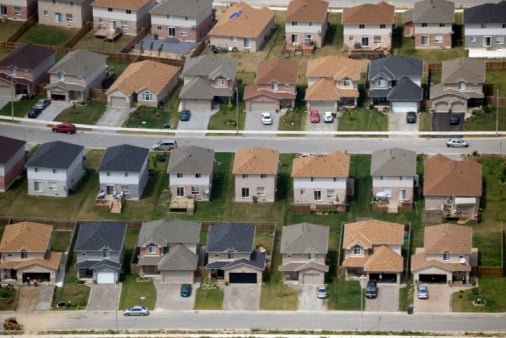Housing
Cleveland, Washington, Chicago Post Smallest Gains on Case-Shiller June Index
Published:
Last Updated:

The largest year-over-year gains came in Denver (10.2%), San Francisco (9.5%) and Dallas up (8.2%). The largest month-over-month gains came in Detroit and Boston, where prices rose 1.8% and 1.5%, respectively, compared with May.
The S&P/Case-Shiller home price index for June increased by 5.0% year over year for the 20-city composite index and by 4.6% for the 10-city composite index. The national index rose 4.5% year over year, compared to a 4.4% gain in May. The consensus estimate for the year-over-year 20-city index called for growth of 5.2%.
Month over month, the 10-city index rose 0.9%, while both the 20-city index and the national index gained 1.0%. On a seasonally adjusted basis, the 10-city and 20-city indexes fell 0.1% from May to June. All 20 cities reported increases in May before seasonal adjustment; after seasonal adjustment, nine were down, nine were up and two were unchanged.
ALSO READ: America’s Most Segregated Cities
The index tracks prices on a three-month rolling average. June represents the three-month average of April, May and June prices.
Average home prices for May remain comparable to their levels in the winter of 2005.
Compared with their peak in the summer of 2006, home prices on both indexes remain down about 12% to 14%. Since the low of March 2012, home prices are up 33.8% and 34.9% on the 10-city and 20-city indexes, respectively.
The chairman of the S&P index committee said:
Nationally, home prices continue to rise at a 4-5% annual rate, two to three times the rate of inflation. While prices in San Francisco and Denver are rising far faster than those in Washington DC, New York, or Cleveland, the city-to-city price patterns are little changed in the last year. Washington saw the smallest year-over-year gains in five of the last six months; San Francisco and Denver ranked either first or second of all cities in the last five months. The price gains have been consistent as the unemployment rate declined with steady inflation and an unchanged Fed policy.
The missing piece in the housing picture has been housing starts and sales. These have changed for the better in the last few months. Sales of existing homes reached 5.6 million at annual rates in July, the strongest figure since 2007. Housing starts topped 1.2 million units at annual rates with almost two-thirds of the total in single family homes. Sales of new homes are also trending higher. These data point to a stronger housing sector to support the economy.
ALSO READ: The 10 Most Polluted Cities in America
A financial advisor can help you understand the advantages and disadvantages of investment properties. Finding a qualified financial advisor doesn’t have to be hard. SmartAsset’s free tool matches you with up to three financial advisors who serve your area, and you can interview your advisor matches at no cost to decide which one is right for you. If you’re ready to find an advisor who can help you achieve your financial goals, get started now.
Investing in real estate can diversify your portfolio. But expanding your horizons may add additional costs. If you’re an investor looking to minimize expenses, consider checking out online brokerages. They often offer low investment fees, helping you maximize your profit.
Thank you for reading! Have some feedback for us?
Contact the 24/7 Wall St. editorial team.